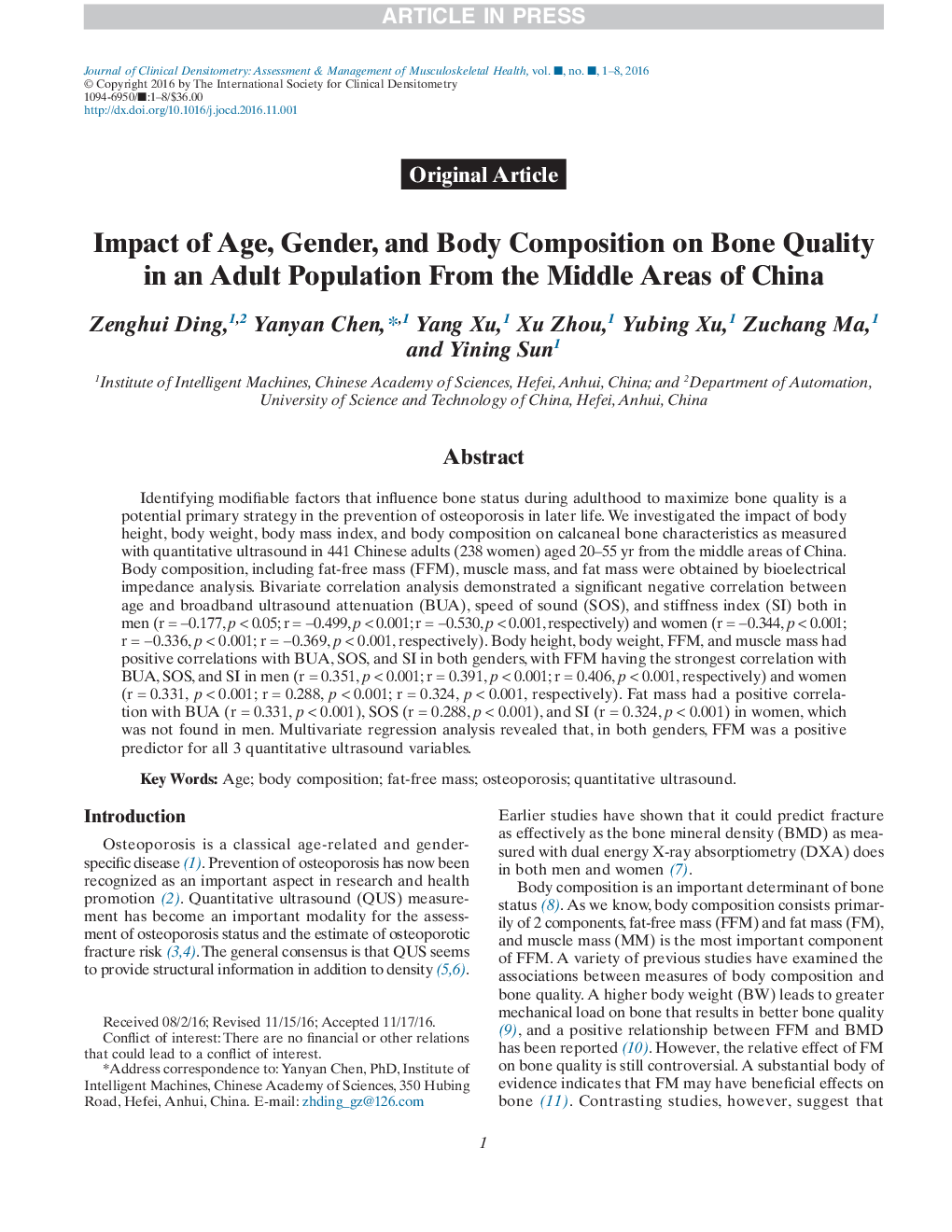| Article ID | Journal | Published Year | Pages | File Type |
|---|---|---|---|---|
| 8723014 | Journal of Clinical Densitometry | 2018 | 8 Pages |
Abstract
Identifying modifiable factors that influence bone status during adulthood to maximize bone quality is a potential primary strategy in the prevention of osteoporosis in later life. We investigated the impact of body height, body weight, body mass index, and body composition on calcaneal bone characteristics as measured with quantitative ultrasound in 441 Chinese adults (238 women) aged 20-55âyr from the middle areas of China. Body composition, including fat-free mass (FFM), muscle mass, and fat mass were obtained by bioelectrical impedance analysis. Bivariate correlation analysis demonstrated a significant negative correlation between age and broadband ultrasound attenuation (BUA), speed of sound (SOS), and stiffness index (SI) both in men (râ=ââ0.177, pâ<â0.05; râ=ââ0.499, pâ<â0.001; râ=ââ0.530, pâ<â0.001, respectively) and women (râ=ââ0.344, pâ<â0.001; râ=ââ0.336, pâ<â0.001; râ=ââ0.369, pâ<â0.001, respectively). Body height, body weight, FFM, and muscle mass had positive correlations with BUA, SOS, and SI in both genders, with FFM having the strongest correlation with BUA, SOS, and SI in men (râ=â0.351, pâ<â0.001; râ=â0.391, pâ<â0.001; râ=â0.406, pâ<â0.001, respectively) and women (râ=â0.331, pâ<â0.001; râ=â0.288, pâ<â0.001; râ=â0.324, pâ<â0.001, respectively). Fat mass had a positive correlation with BUA (râ=â0.331, pâ<â0.001), SOS (râ=â0.288, pâ<â0.001), and SI (râ=â0.324, pâ<â0.001) in women, which was not found in men. Multivariate regression analysis revealed that, in both genders, FFM was a positive predictor for all 3 quantitative ultrasound variables.
Related Topics
Health Sciences
Medicine and Dentistry
Endocrinology, Diabetes and Metabolism
Authors
Zenghui Ding, Yanyan Chen, Yang Xu, Xu Zhou, Yubing Xu, Zuchang Ma, Yining Sun,
